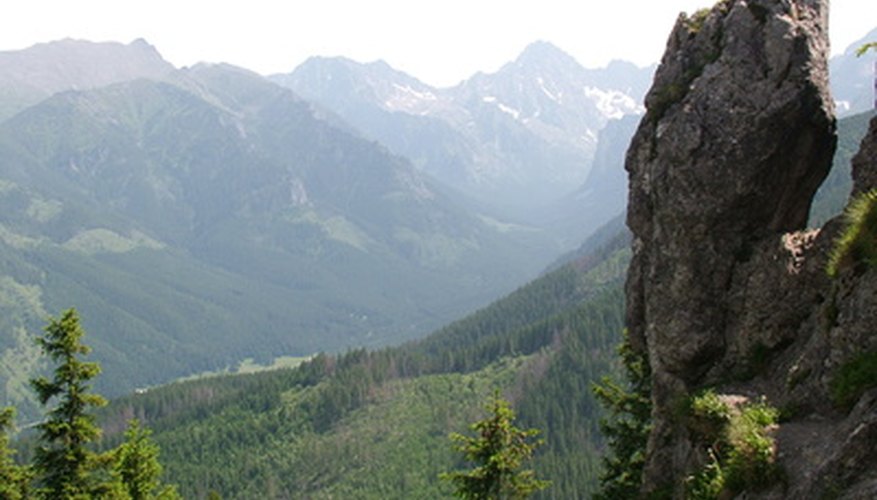The percentage of oxygen in the atmosphere is 21 per cent whether you live in the mountains or at sea level. Mountainous altitudes have less oxygen since total air pressure decreases at higher elevations. This is why your lungs have to work harder to acclimate to "thinner air" when you visit places like the Rocky Mountains or climb Mount Everest. Iron oxidation, or rusting, is a chemical reaction that makes it easy to assess how many oxygen molecules are in an air sample.
Apply masking tape to one side of each test tube. Use four test tubes, all the same height and size. The masking tape will be used to mark the water level in each test tube. Mark the starting water level one cm from the mouth of each test tube. This will be the initial oxygen measurement in the air sample.
- The percentage of oxygen in the atmosphere is 21 per cent whether you live in the mountains or at sea level.
- The masking tape will be used to mark the water level in each test tube.
Ball up two sections of steel wool approximately 2.5cm -- or one inch -- in diameter. Push one ball into the bottom of one test tube using a pencil. The steel wool is your iron source. You will have two test tubes with a ball of steel wool at the bottom and two without the steel wool. The purpose of the steel wool is to capture the gaseous oxygen molecules in the form of rust.
Invert and clamp test tubes to the ring holders over four jars of water. The starting mark on the masking tape should be level with the water surface in each jar. Make sure that the jars are of equal height and size and that the amount of water fills each jar to within two cm from the top. Keeping size and water amounts equal assures that the oxygen-level experiment has controls.
- Ball up two sections of steel wool approximately 2.5cm -- or one inch -- in diameter.
- The starting mark on the masking tape should be level with the water surface in each jar.
Drape a clear, plastic bag over the experiment. Check the water level each day until there are no more changes in the water level. Mark your observations in a notebook or lab book each day. The changes should depict the change in the number of oxygen molecules under non-changing atmospheric pressure.
Analyse the displacement of water volume in each of the test tubes. Use the formula volume = pi times radius squared times height, the formula for the volume of a cylinder. A test tube is in the shape of a cylinder. Start by calculating the starting volume of air in each test. End by calculating the proportion of oxygen in each test tube at the end of the experiment.
- Drape a clear, plastic bag over the experiment.
- Start by calculating the starting volume of air in each test.
TIP
Sea level altitude is zero meters where barometric pressure is 760 mg of mercury. Any air sample taken at sea level will measure oxygen at 100 per cent.
WARNING
The cost for the experiment can range up to £13.
